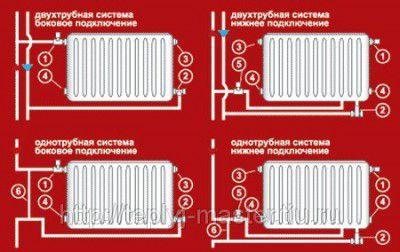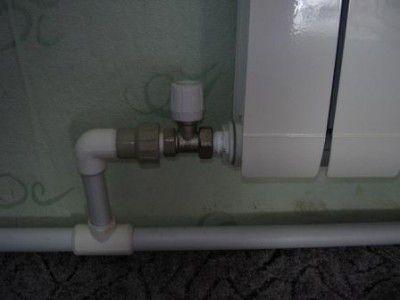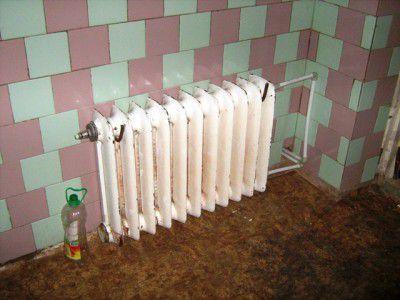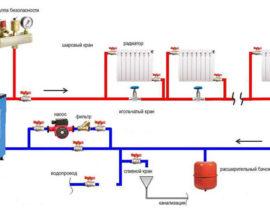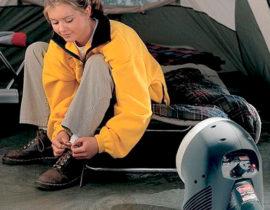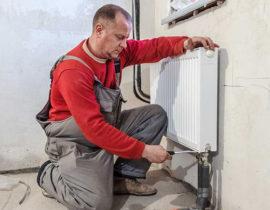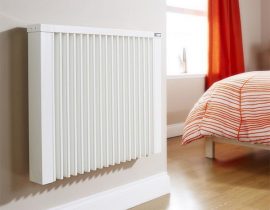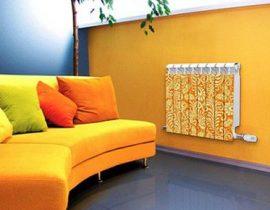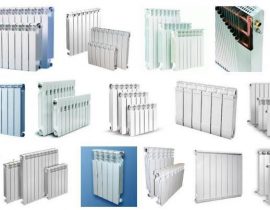Heating radiators are an important part of the heating system in the house. From their correct choice and proper placement depends on the efficiency of the heating system of the home. Heating radiators can improve the efficiency of an autonomous heating system in a private house, and replacing them with more modern and high-quality ones will even increase the air temperature in apartment buildings powered by main water supply systems. Typically, the initial installation of radiator batteries is carried out by builders, and their replacement is carried out either by specialists from a local management company or by a third-party specialized company. But in both cases, additional costs can be avoided if you install heating radiators with your own hands.
Content
General characteristics of the process of installing radiators
First of all, it is worth understanding that different types of heating radiators have different requirements for their installation.The easiest to install will probably be aluminum radiators, but classic cast iron batteries will require the use of specialized equipment - you will have to resort to welding, and this is a very specific area that requires the presence of professionals.
However, modern heating radiators, made from lightweight, but at the same time durable materials, are assembled and installed a little more difficult than a children's designer, do not require any specific skills and can be placed on almost any surface. They can even be broadcast on a plasterboard wall.
The geometry of the placement of heating radiators
An important role in creating a comfortable atmosphere from the heating system is the location of heating radiators.
There are certain building standards for the placement of heating radiators both relative to the wall and relative to the floor. SNiPs determine that the minimum gap between the bottom edge of the battery and the floor cannot be less than 5 centimeters.
It is also necessary to provide a gap between the body of the heating radiator and the wall surface. It must also be at least 5 centimeters. Only in this case will normal air circulation heated by the battery be ensured.
In accordance with the existing standards, we calculate the places for installing batteries and mark the points for their fastening.
Required Skills
In order to independently carry out the installation of heating radiators, you must have at least minimal construction and plumbing skills. To receive them, there is no need to enroll in specialized courses - just carefully read the video instructions published in large numbers on the Internet.
Preparing the tools
Of course, for the installation of radiators, you need to stock up on the necessary tools. Do not be afraid that you will be required to purchase expensive devices. Most of the tools for such work can be found in your back room, and the necessary, but missing items can be rented or borrowed from friends.
So, find or borrow an electric screwdriver, pliers, a hammer drill or a drill with an impact function and a special drill or drill for them, as well as a regular building level.
When purchasing a heating radiator, pay attention to the completeness of the complete set of purchased devices. To do this, take a picture of the outlets of the pipes of the heating system in your house.
In the case of initial installation during construction, it is better that the outlet pipes of the pipes of the heating system fit the inlet pipes without adapters. But if you replace batteries during repairs, the situation can become more complicated.
We bring pipes to the radiators
When repairing and replacing a radiator, you may have to change the outlet pipes of the pipes of the heating system in your room.
The easiest and most reliable way to connect old metal pipes with modern batteries is as follows:
- The heating system is blocked and excess water is drained from it.
- An angle grinder cuts off the excess part of the old water supply pipes. At the same time, we are guided by the rule “Measure seven times, cut once.
- We cut a new thread on the remaining piece of steel pipe.
- A shut-off valve of a suitable diameter is screwed onto a piece of pipe.
- A new valve can be connected to a new heating battery using a specialized flexible connection made of a metal-plastic pipe or using a copper pipe wiring. The installation of metal-plastic looks simpler, however, such a pipe can collapse from excessively high temperatures in the pipes of the main heat supply. But a copper pipe can withstand even superheated steam, but for its installation it will be necessary to use soldering, which not everyone can do.
The main characteristic of the installed hot heat supply to heating radiators is tightness. Water in heating systems can be under high pressure. When checking the tightness of the connections, it is recommended to let the water flow in stages, initially with a small level of pressure.
Also, when buying, we check the complete set of pipes and, if necessary, buy additional connecting elements. Please note that when assembling the sections, a key of a special configuration can be used - check its availability in the delivery set.
We install radiators
After preparing the heating system, we begin to mark the place for installing batteries. We estimate where the brackets should be located, mark their future position and check the horizontal level of the installation using the building level.
We fasten the brackets and broadcast the battery assembly on them.
Please note that the number of attachment points on the heating radiator to the wall directly depends on the number of sections and the design of the battery.
In the event that you connect steel pipes to the radiator by welding, you can limit yourself to two brackets.If the connection to the water heating main is on polypropylene pipes and fittings, then at least three brackets are needed to fix the battery. In addition, the number of fixation points depends on the number of sections. With the number of sections up to 5, you can limit yourself to three attachment points: 2 from above and 1 from below. Further, when increasing the sections to 10, you need to add 1 fastener point at the top and bottom.
Modern batteries are installed on almost any surface, including wooden walls.
Do-it-yourself installation of bimetallic heating radiators - step by step video instruction


